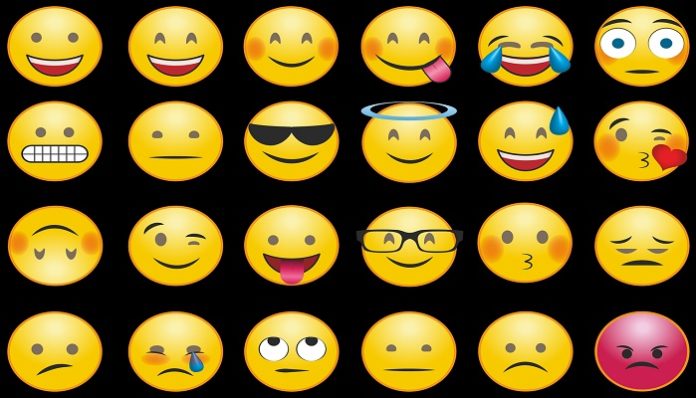
It is no lie that text messaging is this generation’s go-to form of communication. Whether it’s one of the estimated 205 billion daily emails or the 55 billion WhatsApp messages or the 200,000 iMessages sent per second, the way we keep in touch is kept quick, simple and instant. The awkward/long phone call is a thing of the past.
WhatsApp, Facebook Messenger, Skype and other web-based communication platforms are dominating the ‘chat’ industry, with Facebook-owned WhatsApp now boasting 450 million users on every continent. No other messaging service comes close, and sharing cat videos has never been easier thanks to tons of built-in features and functionality.
I’m currently in a family WhatsApp group chat (one of many) designed to help each other find a Christmas present. Although I treat it with scorn at first, I soon realized just how easy the conversation had become. Pretty much every request was an emoji, a small picture used in place of words, ranging from the iPhone image all the way to clothes, shoes, and food. It got a little silly when the Statue of Liberty and alien emojis made an appearance, but it’s expected when you’re chatting with someone who is a little too old to understand how emojis work.
Emojis are beginning to change the way we communicate, arrange our diaries and even make notes on our phones, acting as a shorthand way of writing that is also evolving conversations in other ways too.
It isn’t the first time we’ve used pictures to communicate as opposed to an alphabet. The Hieroglyphs used in ancient Egypt happened to be effectively pictures of everyday items and figures that linked together to create text, which was eventually replaced by Cuneiform several hundred years later. The latest ‘Hieroglyphs’ that we are currently using to tell people what we want for Christmas happen to be actually Japanese. The word Emoji is a concoction of languages that makes Japanese culture so unique in the first place.
Back when SMS texting was the way to keep in touch, Japanese wasn’t exactly the most user-friendly of languages to fit onto a mobile phone keypad. Soon, pictures were being generated using standard mobile phone characters to get the same message across. Happiness soon became :). Sunglasses became 8). Elvis was 5B-/.
This new ‘language’ soon turned into actual images using ASCII technology, before the full emoji became a feature of early text messaging software in Japan and then smartphone communication programmes from around 2009 onwards. Soon, an entire catalog of 12×12 images was helping us to confirm what we wanted for dinner, and to react to those hilarious cat videos mentioned earlier. These soon evolved into full 256 x 256 micro images that we are now oh so used to. Emojis have become so prevalent that the Oxford English Dictionary now lists the word, as well as some of the more famous emojis such as the Face with Tears of Joy.
Now, emojis are literaly everywhere, grabbed by capitalism and plastered onto lunch-boxes and made into cushions. Fans of fashion can get their hands on jumpers and t-shirts displaying every emoji imaginable, and there is even an online slot game. Facebook really cemented the importance of the emoji, when the simple like button was expanded to include reactions such as love, anger or hilarity.
Emojis probably hit their peak earlier this year, with the release of the Emoji movie in the summer. Despite many critics describing the whole premise of the film as tenuous and even ridiculous, the movie does what it actually says on the tin and follows the adventures of various Emojis as they try to avoid deletion.
The future of Emojis will merely be down to how technology continues to develop. With our conversations already peppered with pictures and responses to images, messages or situations summed up in nanoseconds, the big question of whether Emojis will find their way into publication remains to be answered. The future of communication points to an internationally used single language that everyone can understand, and even the youngest of children will instantly recognize a small picture of something before they know the world of it.
Within the iPhone X, Apple released moving Emojis that match your facial movement. This is the next wave of the Emoji evolution and if this progression continues, soon enough there is no need to text or speak at all, Emojis will replace any necessary text completely. What are your thoughts on the rise of Emojis?
Featured image via Pixaline on Pixabay



















I firmly believe that social media improves our lives, particularly in terms of communication. Additionally, you may send images using the gb whatsapp from anywhere in the world, eliminating the need to print them. I suggest you pay close attention to this communication software. With your loved ones, download and send text messages, quick photos, and movies.